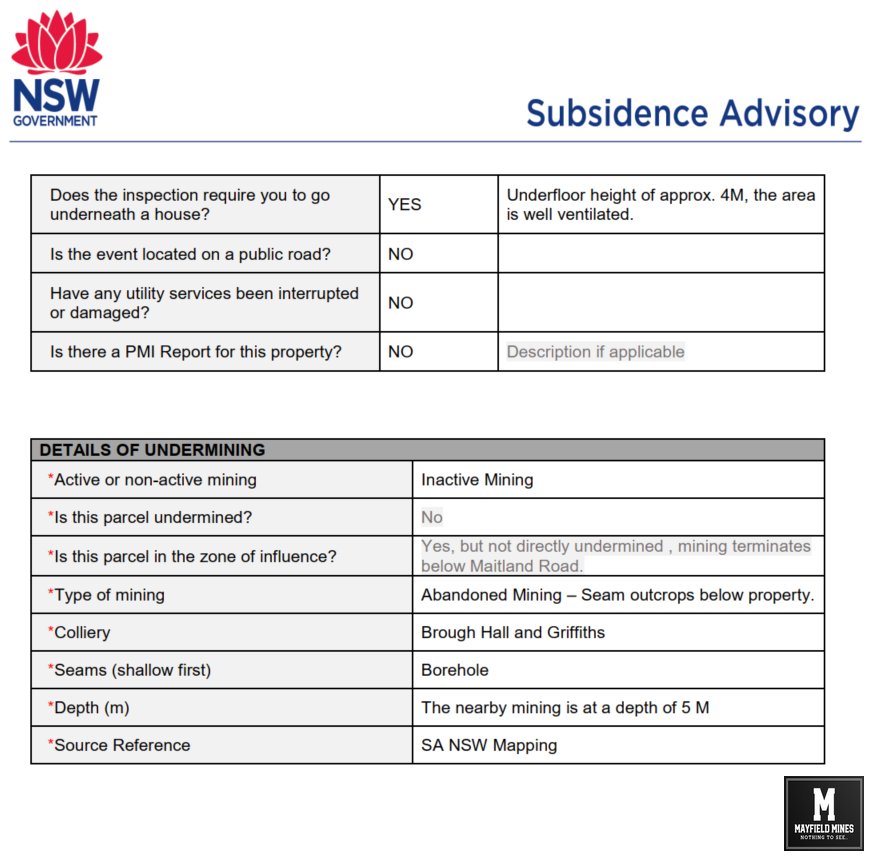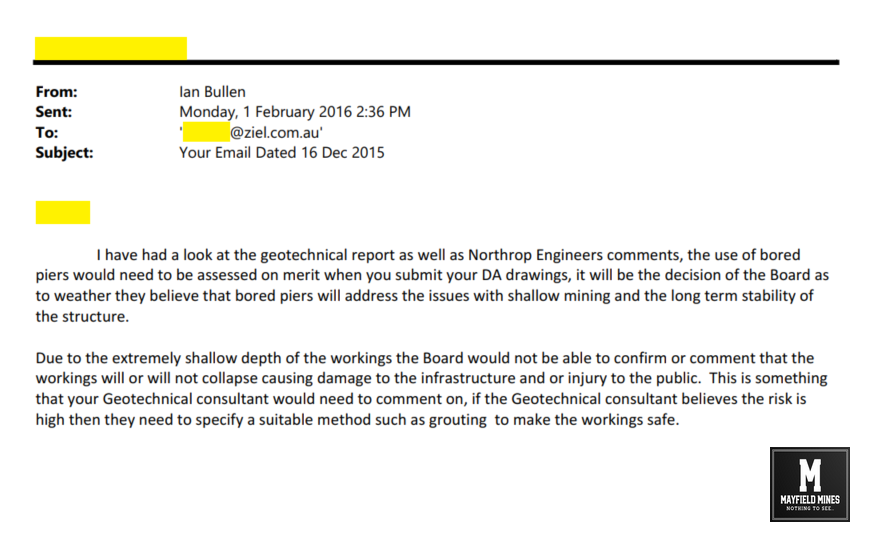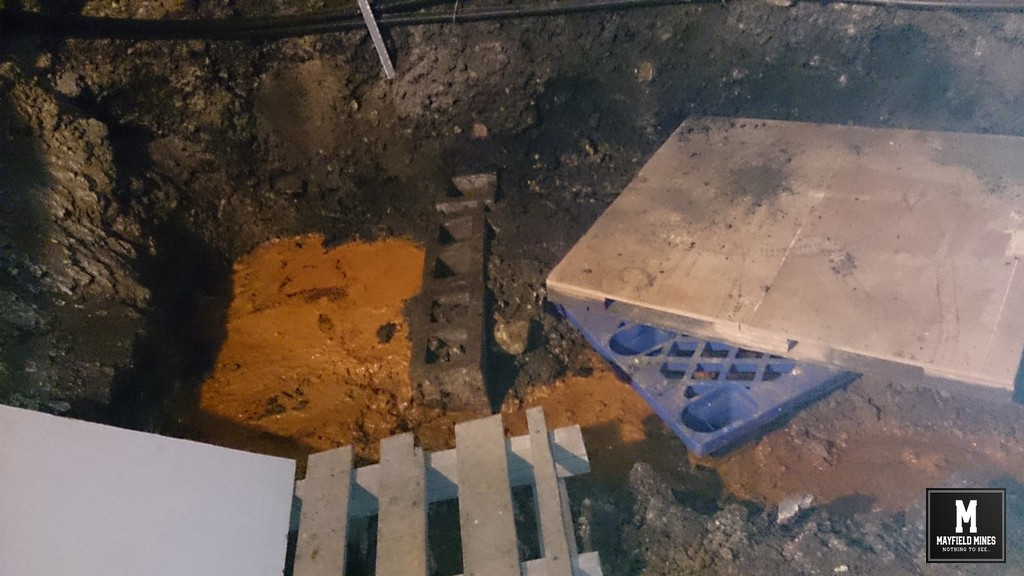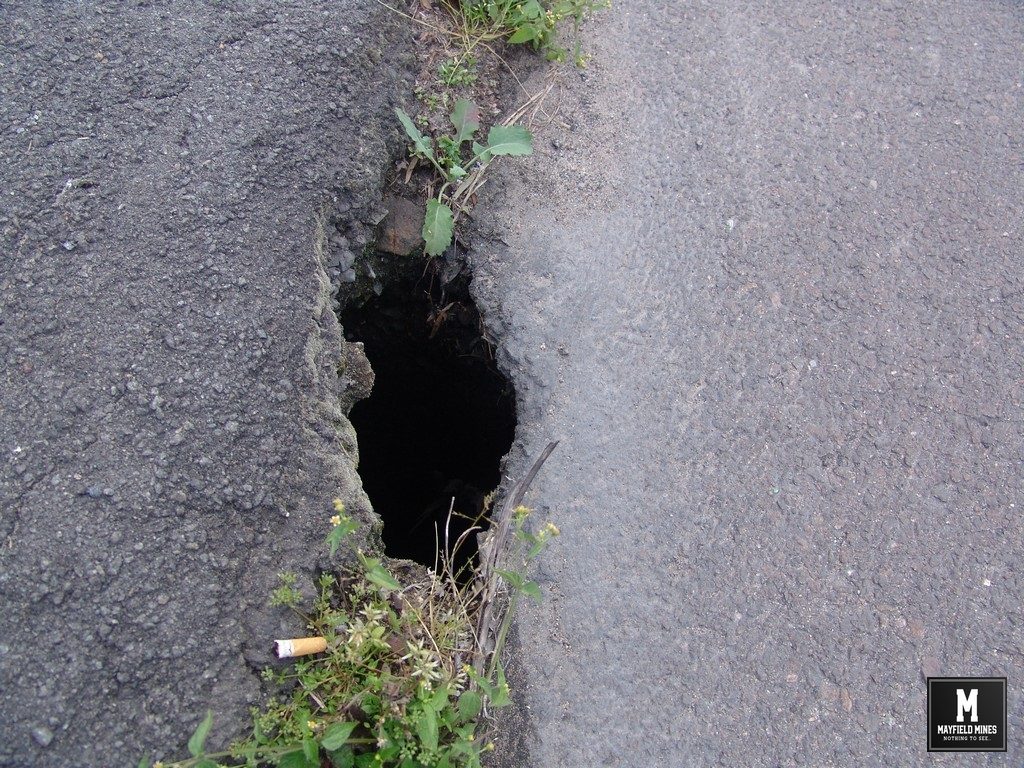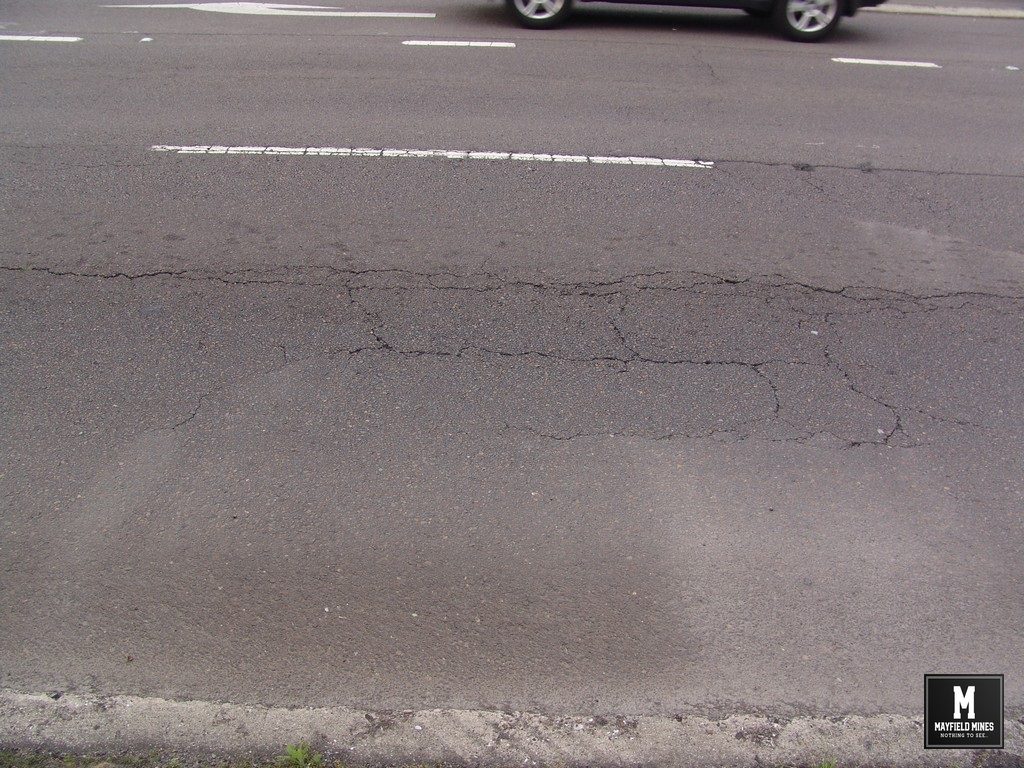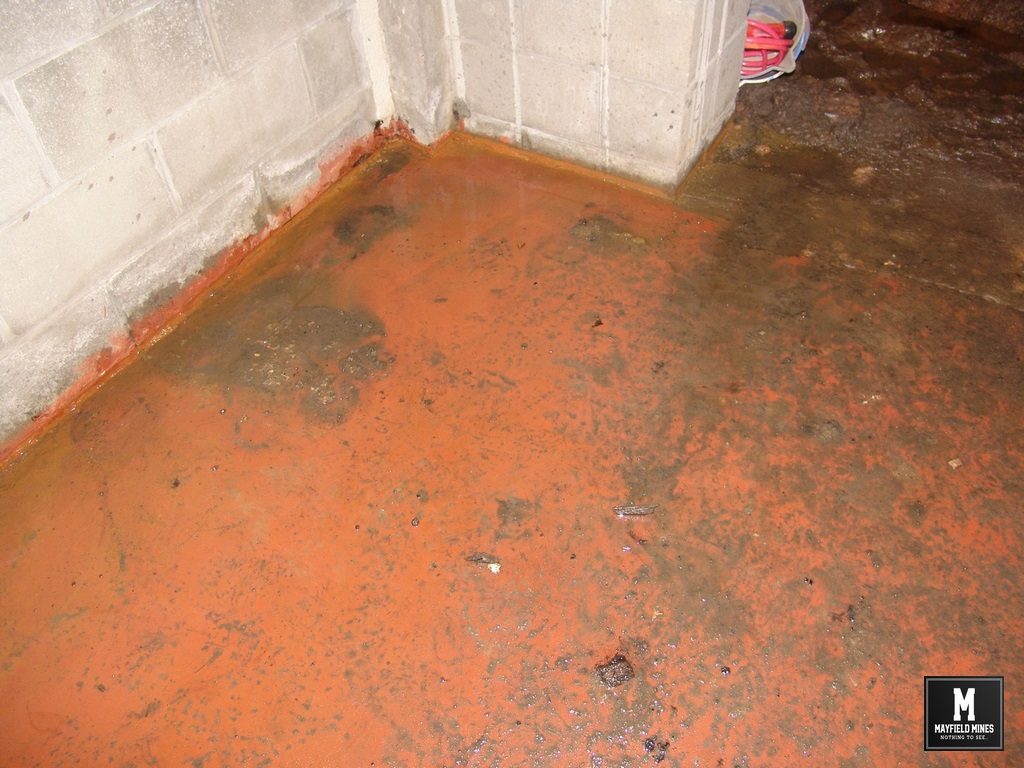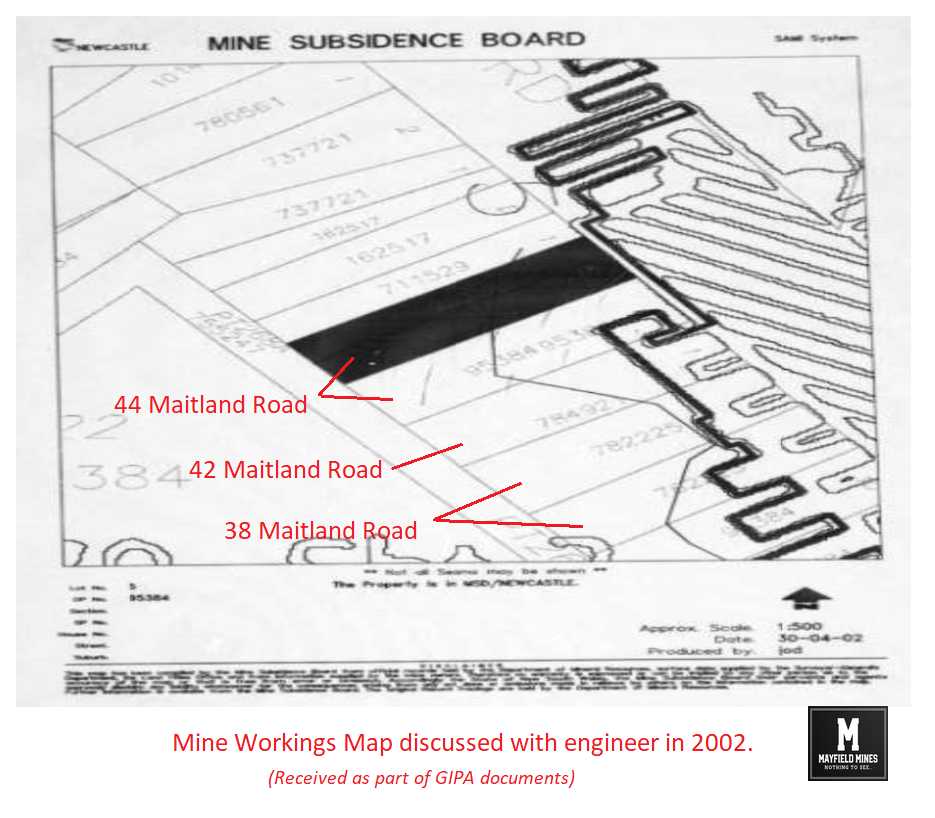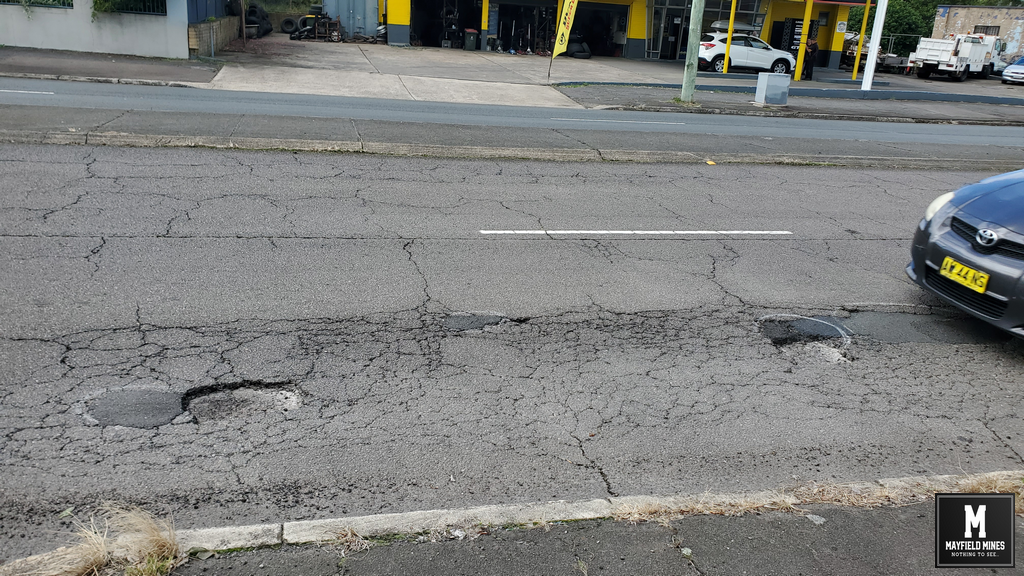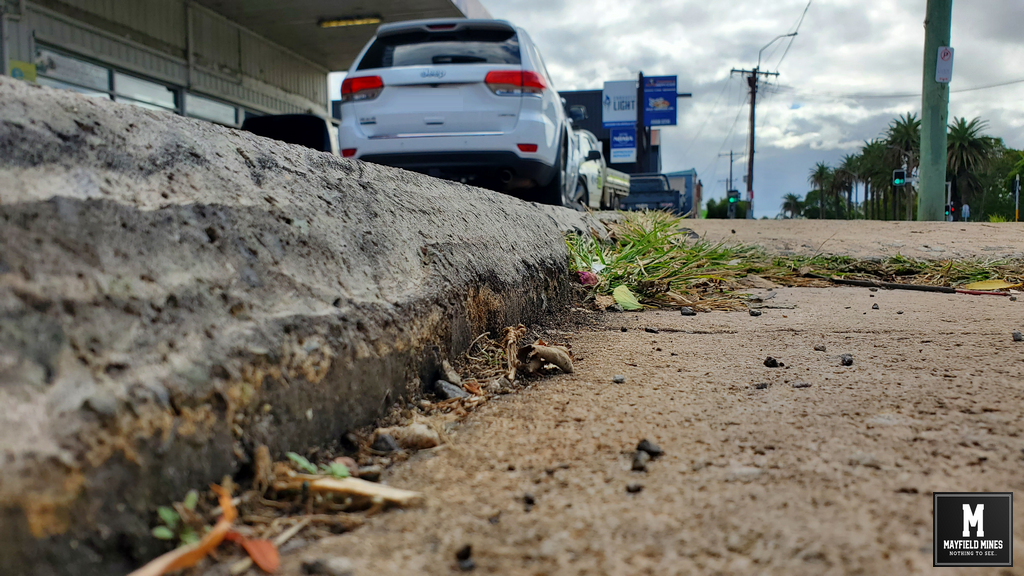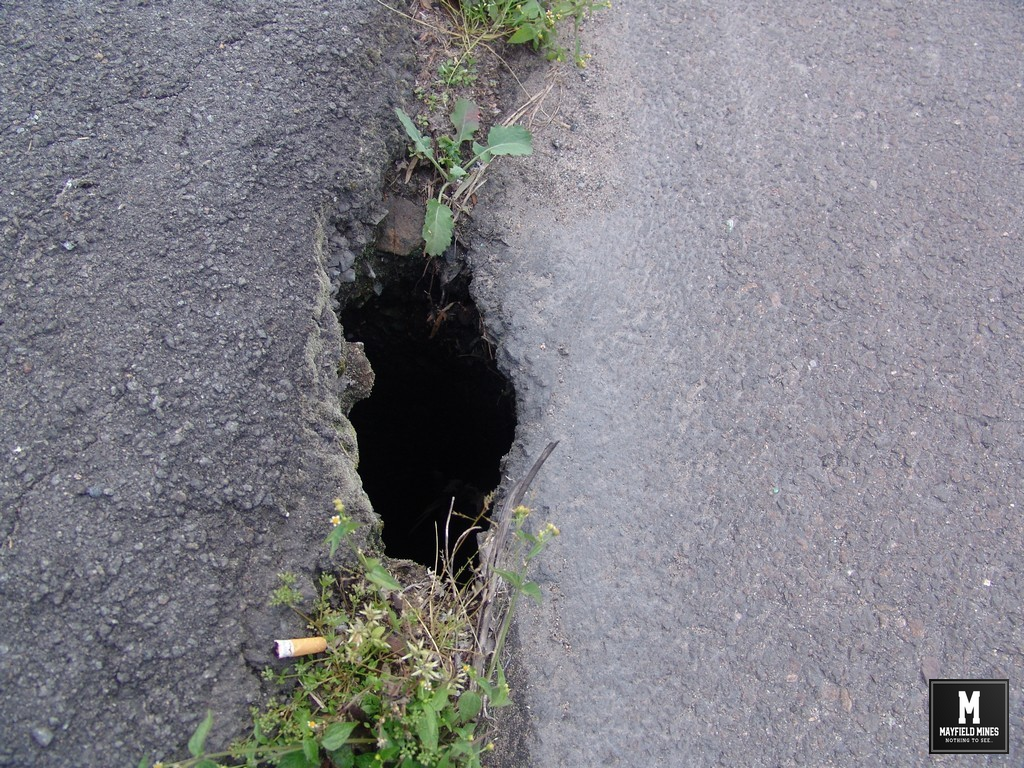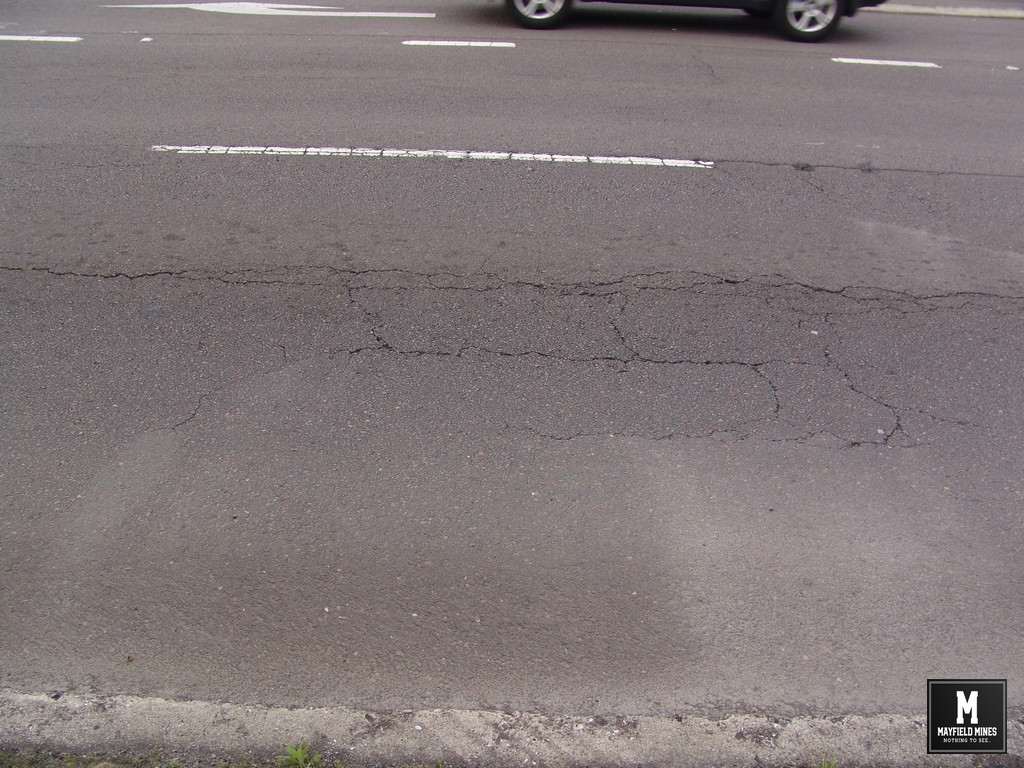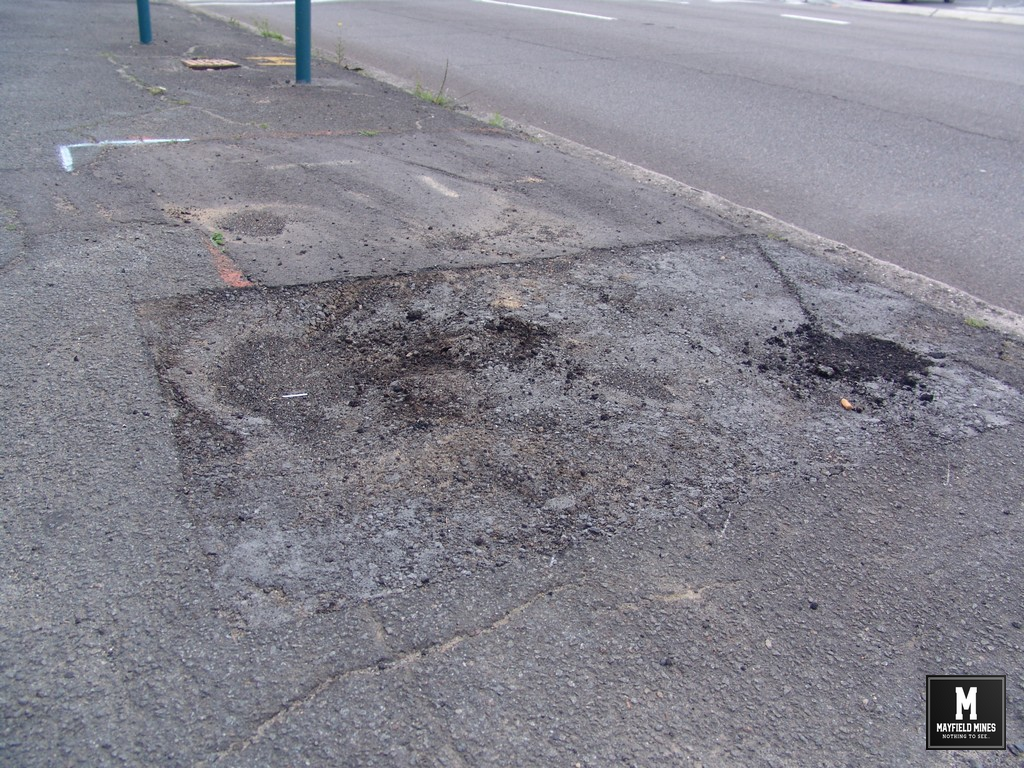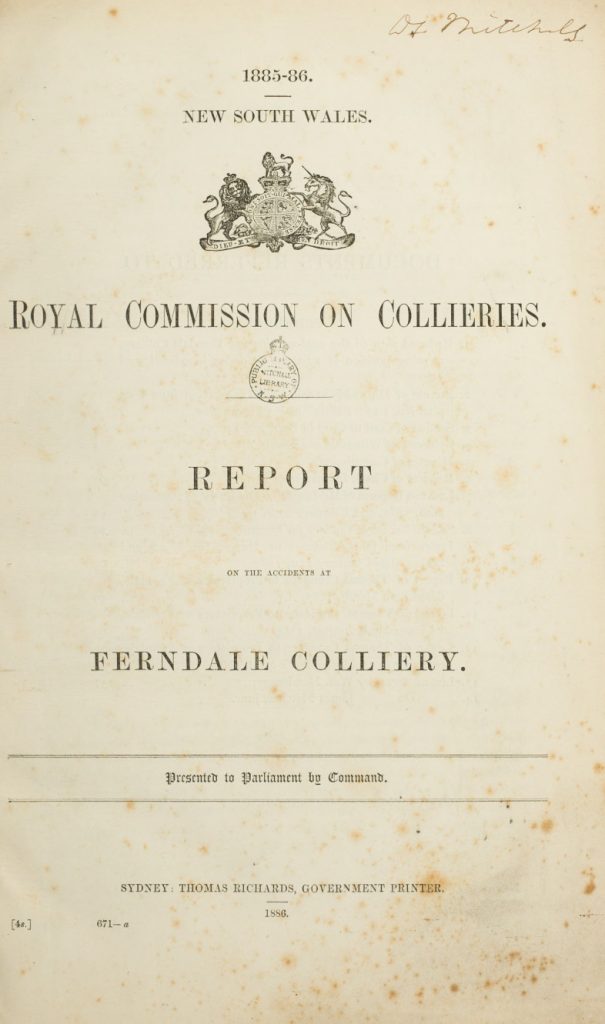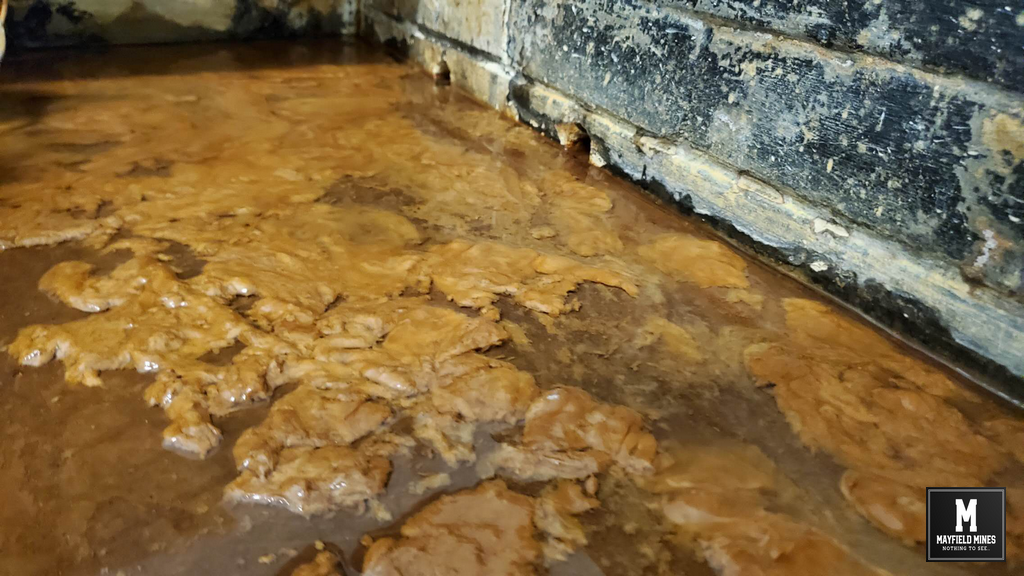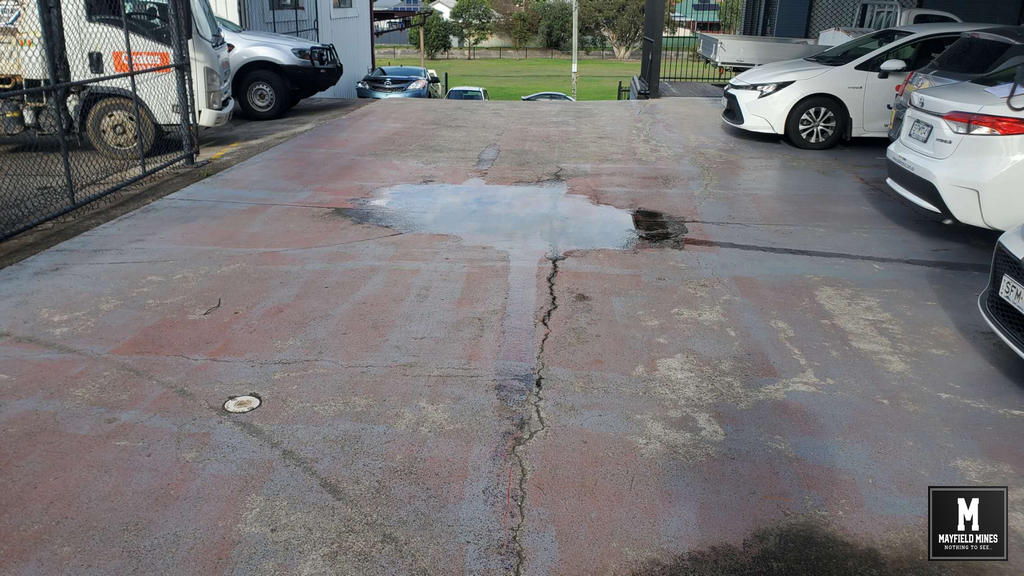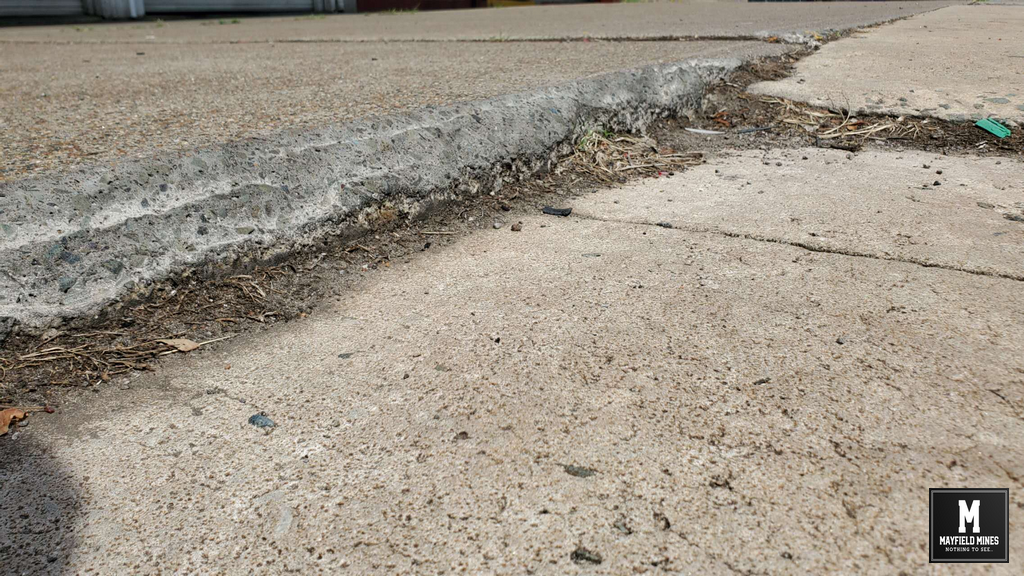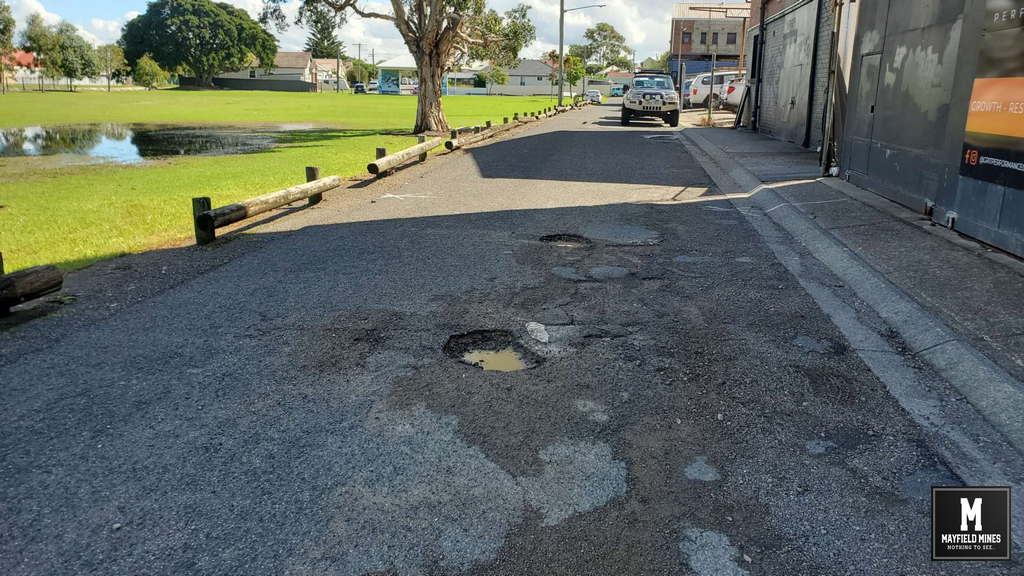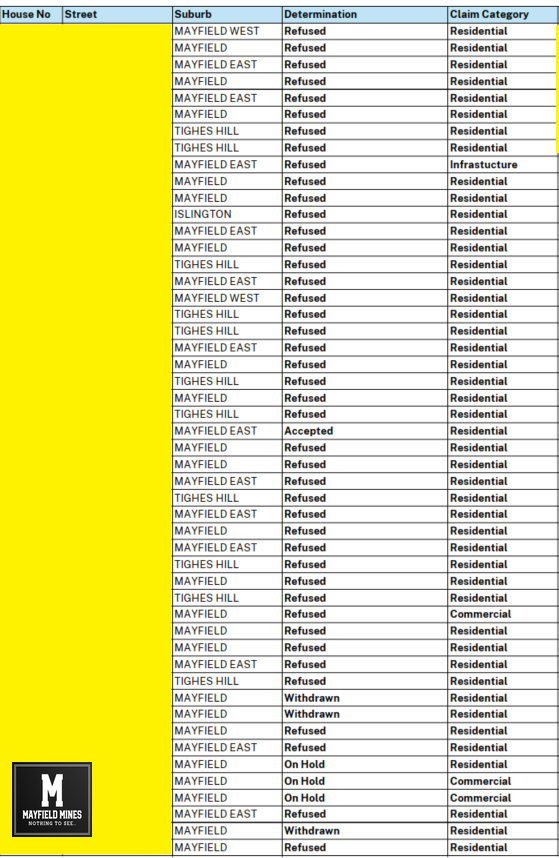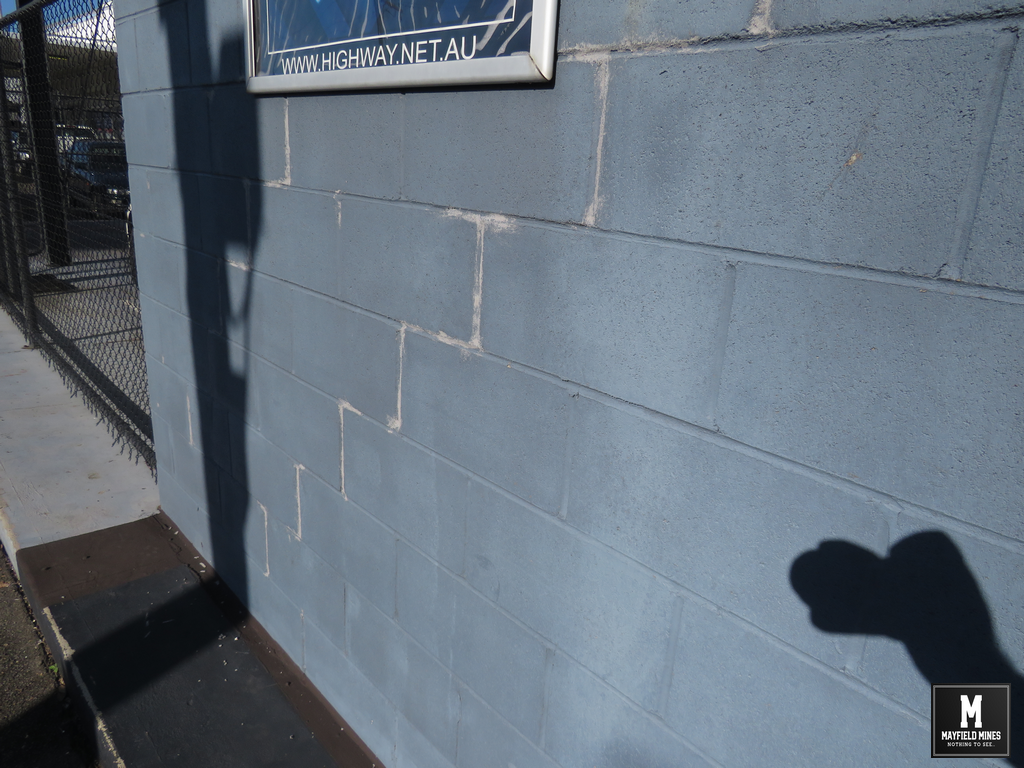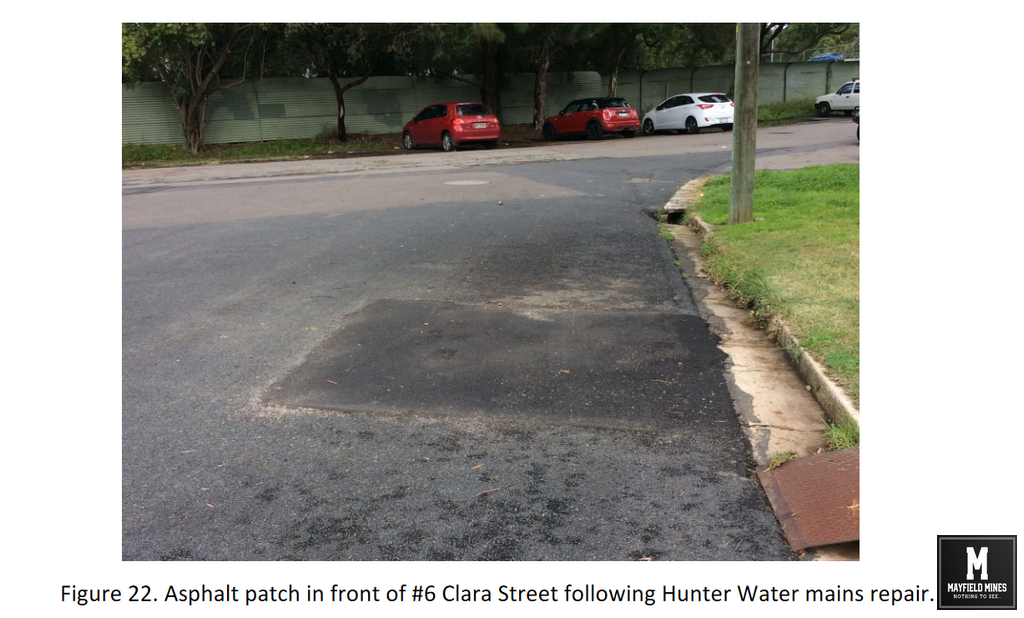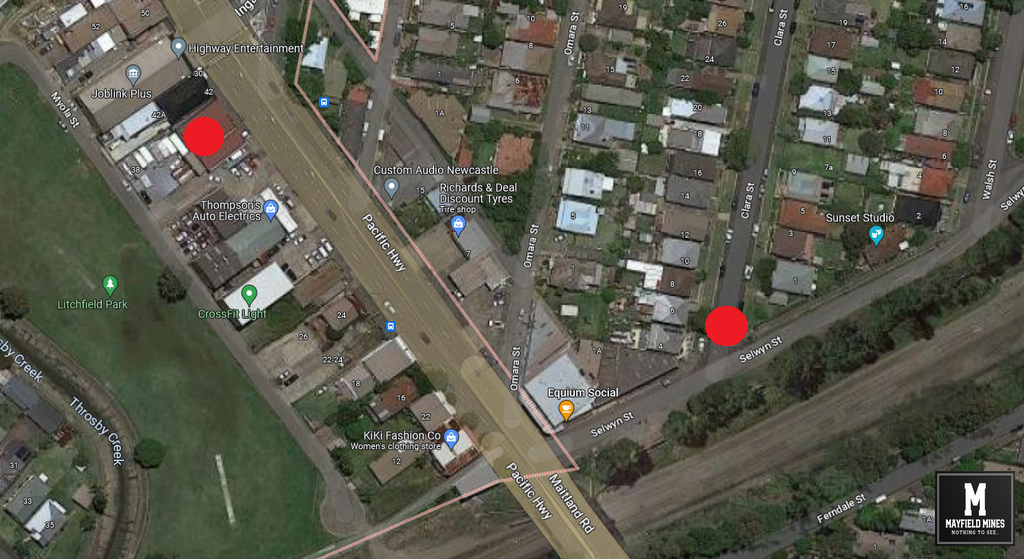In Oct 2019, we called Subsidence Advisory NSW to visit our premises.
They visit promptly and treat their inspection as a “Safety & Remediation Report” asking us to work with Legacy Mines department handing us the Legacy Mines brochure and contact number. Later, Subsidence Advisory NSW refused our claim suggesting;
• There are no mines under 38 Maitland Road Mayfield
• Mining terminates under Maitland Road
• The nearest Colliery is Brough Hall and Griffiths
• No damage to the building consistent with mine subsidence was observed or reported.
Note: David Sedgman was the SA NSW representative who acknowledged mine workings with our buyer during the 2015 sales negotiations. He is the same person who visited us in 2019 stating that there are no mine workings under the same property.
—————
2002, Mines under our building as discussed with engineer (GIPA)
2012, No mines under our buildings as told to us by SA NSW
2015, No mines under our buildings as told to us by SA NSW
2015, Mines under our building as per David Sedgman SA NSW (GIPA)
2016, Mines under our buildings as per Ian Bullen SA NSW (GIPA)
2019, No mines under our buildings as told to us by David Sedgman/Paul Lambert SA NSW
